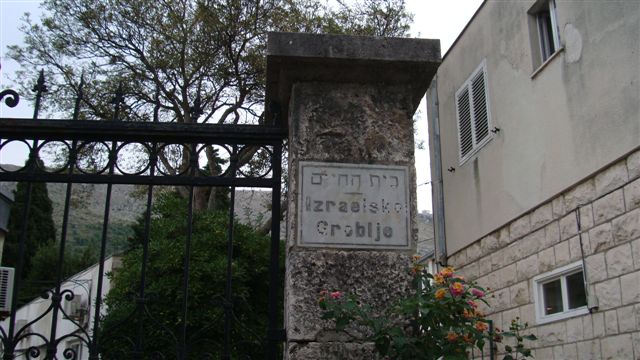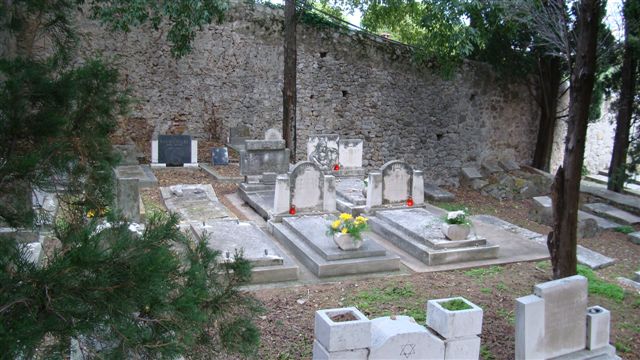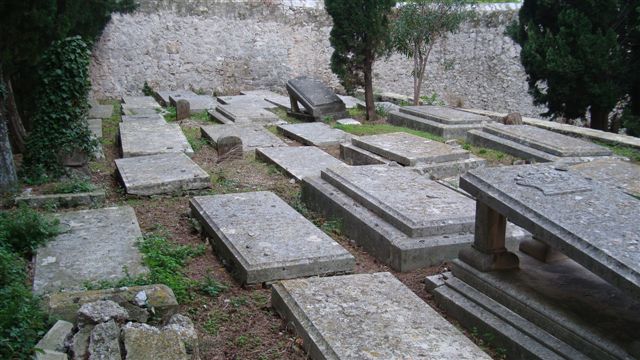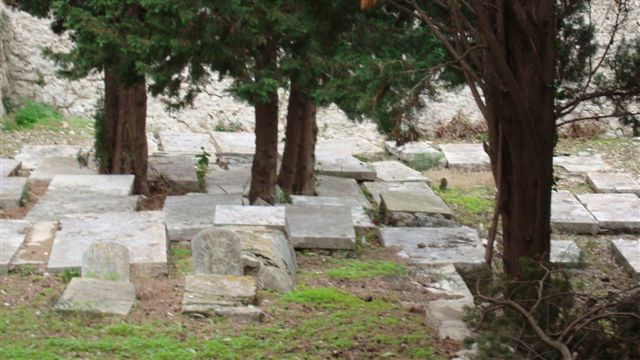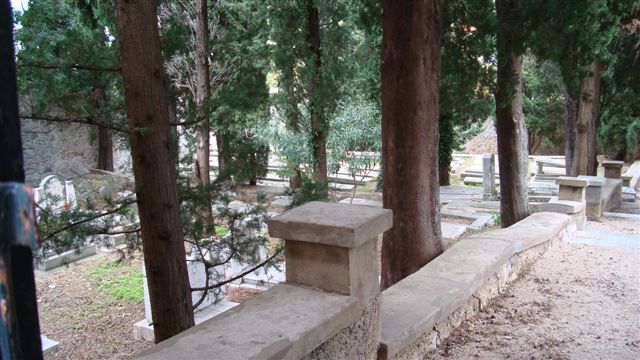 City of Dubrovnik
City of Dubrovnik
Dubrovnik-Neretva, County (19)
42°39' N 18°05' E, 241 mi SSE of Zagreb. Alternate names: Dubrovnik [Croa], Ragusa [Ger, Ital], Ragúza [Hun], Ragusium [Lat]. Jewish Gen locality page [February 2009]
The Jewish Community of Dubrovnik: [February 2009]
Zudioska 3
20000 Dubrovnik
tel : 020/321-028
President : Sabrina Horovic
Jewish Guide to Croatia [July 2014]
Archives [October 2000]
Dubrovnik Jewish blog. Jewish history [February 2009] with photos
Synagogues Without Jews [February 2009]
An important maritime trading center for centuries, Dubrovnik was an independent city-state and republic known as Ragusa. Jewish presence was first recorded in 1356, but the community began to flourish following the expulsion of Jews from Spain in 1492. Today's Jewish community numbers 46, of whom about 20 actually live in Dubrovnik. The Jewish ghetto was set up in the mid-16th century on Zudioska (Jewish Street), a steep and narrow alley originally called Lojarska. Located in the center of the city just off the Stradun, the heart of the Old Town, the ghetto had eleven houses and a synagogue closed by gates at either end. The houses and synagogue were connected by interior passageways making it possible to move through the ghetto without going outdoors.
Photos. The synagogue established in 1408 at ZŽudioska 5 (phone: +385 20 321 028) is on the upper floor of a narrow, two-story stone building with its original 17th century furnishings and probably dated to 1300. The exterior similar to other buildings on the street, has windows framed by pointed Saracen arches on the first floor (U.S. second). The sanctuary was redesigned in the baroque style in the mid-17th century. The bimah has a delicately carved wooden lecturn and a wooden ark flanked by twisted shafts on Corinthian columns. The synagogue survived a major earthquake in 1667 and World War II when the local Toletino family smuggled precious ritual objects (valuable silver, textiles, Torah scrolls from the 13th and 14th centuries brought to Dubrovnik from Spain after 1492) and even the ark to safety using the internal passages that linked the synagogue to neighboring houses. When Dubrovnik was attacked in 1991 and 1992, two shells hit the synagogue roof causing serious damage. Restoration begun in 1996 and overseen by the Dubrovnik Rebuilding Fund, a nonprofit organization established jointly by the Dubrovnik tourist agency Atlas and the American Society of Travel Agents (ASTA), was completed in 1997. During the 1990s, more than 50 ritual objects had been taken to the United States in 1993-4 by a former president of the community, Michael Papo on loan for an exhibition at Yeshiva University Museum. Papo argued that the objects would not be safe in Dubrovnik given the continuing Balkan conflicts. Backed by the Croatian government, the Dubrovnik Jewish community took the case to court in Zagreb and New York and eventually got the objects back in late 1998. Since then, two refurbished rooms on the floor beneath the synagogue equipped with alarm systems exhibit the treasures. The community office is nearby at Zudioska 3. [January 2009]
PLOCE DISTRICT JEWISH CEMETERY
:The Jewish community purchased a plot of land in 1652 in Ploce district outside the old city near the northern ramparts, but sold the land at the end of the 19th century and transferred the graves to Boninovo cemetery outside of the town in 1911.The original cemetery site now is a parking lot. A number of old Jewish tombstones were used in the construction of the northern side of the city walls either during reconstruction work in the 18th century to repair the damage caused by a devastating earthquake in 1667 or during World War I. [January 2009] The Jewish cemetery was first mentioned in 1612 when it had to be enlarged and was still in use in 1910. [February 2009]
"Dubrovnik's original Jewish cemetery was established in 1652 in the Ploce district, outside the northern ramparts of the old city. The community sold this at the end of the 19th century and in 1911 exhumed the remains for reburial at a new site in the Boninovo district. Only 30 of the original tombstones remain. Many were used in construction of the northern side of the city walls, either following the earthquake of 1667 or during the First World War: some are still visible embedded in the walls. In 2011, during archeological work at the imposing Pile Gates of Dubrovnik, researchers discovered several old grave markers and fragments used to line a drainage canal." Source [July 2014]
BONINOVO JEWISH CEMETERY:
about 200 tombstones. [Other sources say founded in the late 19th century with about 200 tombstones, including some 30 centuries-old stones transferred there from an even earlier cemetery that lean against the wall with fragments cemented into the wall.] Well maintained and surrounded by a high wall with a gate, a small and well maintained cemetery chapel exists in the site designated as an historic landmark. Several main types of grave markers, with inscriptions in Hebrew, Ladino, and Croatian, include:traditional Sephardic-style horizontal slabs with ornamental carving and Hebrew inscriptionhorizontal tombs with ornamentation of a Turkish influence (sun, moon, stars, and stylized plant motif)
Established in 1911 [ounded in the late 19th century and has about 200 tombstones, including some 30 centuries-old stones transferred there from an even earlier cemetery. , the site was still active in 1994 with a Ceremonial Hall and 200 monuments. The property was nationalized in 1958 but protected as a Historical Landmark; Land Registry: Folder No: 512 Plot No.: 1108. The synagogue at Zudioska St. 3 was built in 1408 and exists, still active [2000] as property of Dubrovnik Jewish Community. This second oldest synagogue in Europe is protected as a historical landmark. The Jewish community was established in 15th century. Source: Srdjan Matic, MD, 40 West 95th Street, Apt. 1-B, New York, NY 10025. (212) 222-7783. Population: 1925/26-101; 1930-93; 1931-120; 1937/38-127; 1941-83; 1947-38; 1994-32. See: Gruber, Ruth Ellen. Jewish Heritage Travel: A Guide to East-Central Europe. New York: John Wiley & Sons, Inc, 1992. Jewish Population: 1931-20; 1947- 0; 1994-1[1999]
photo [July 2012]
I am student from Kyiv in Jewish Studies in Moscow State University. Few days ago, during my trip to Croatia, I was in the Jewish cemetery of Dubrovnik. I think the cemetery was found earlier than 1911. The oldest grave that I found was tav-kuf-tsadi-vav (5696 or 1836). Also there were many graves from 1840s-1860s. They all lie on the ground. Source: This email address is being protected from spambots. You need JavaScript enabled to view it.[July 2012]
REFERENCES:
J. Tadić, Jevreji u Dubrovniku do polovine XVII. stoljeća (1937);
C. Roth, The House of Nasi: Dona Gracia (1948), 85–86;
M. Levi, in: Recueil jubilaire en l'honneur de S.A. Rosanes (1933), 47–53 (Sp.); Hananel-Eškenazil, 1 (1958), 39, 110, 199, 335; 2 (1960), 264;
J. Subak, Judenspanisches aus Salonikki… Ragusa (1906);
Aaron b. David ha-Kohen, Il Processo di Isach Jeshurun, ed. by I.A. Kaznačić (1882).
Zbornik, 1 (1971), Dubrovnik issue; B. Stulli, Zidovi u Dubrovniku (1989).
Photos courtesy This email address is being protected from spambots. You need JavaScript enabled to view it..

